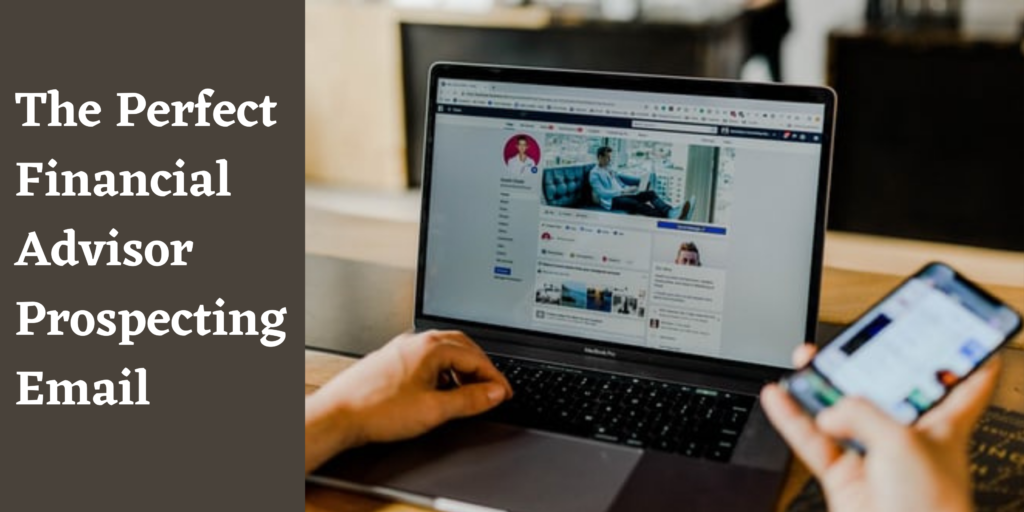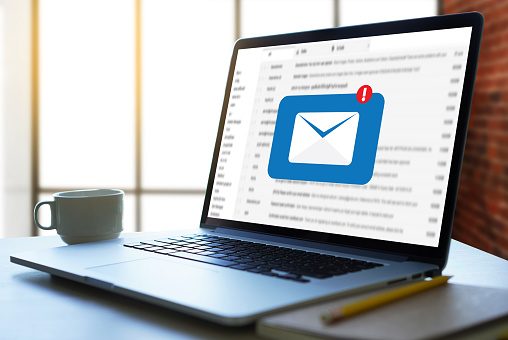
Meaning Of Prospecting Email
We have heard so much about cold email and the email marketing world till now. But, there is another thing in the professional world that is practiced very often. These are called Prospecting Emails. You send it to potential clients to introduce them to your company and the benefits of their business. If you send such an email to a person you do not know or haven’t interacted with before, it is much like a cold email.
If you send prospecting emails to a person or client who has a mutual connection with you or has interacted with you before, this type of outreach is called Prospecting email. It is best to send prospecting emails to the people or leads you have interacted with before as they already know about you and your company and what you can offer to them. It is an email outreach method that gets responses and pays off for all the prospecting efforts.
The familiarity could be based on anything- a mutual connection, business leads, referrals, or social media networking. It could be based on referencing the lead’s work or a new position or a possible business announcement too.
Now, we know it is hard for small companies or start-ups to have a considerable amount of leads to start with prospecting emails. In such cases, cold emailing is the best alternative as it can help you build some contacts and leads; then you can start with prospecting emails.
Main Components Of Perfect Prospecting Email for Good Sales
There are a lot of sales email templates out there. Here we are compiling all those to give you a clearer outline of the same.
-
A reason for reaching out
Here, you need to ask yourself some questions. Make your prospect your case study. Is your reason for reaching out valid? Are they suitable for your brand? Are they like the people who were your successful customers in the past? Is your email relevant to them? Can you provide this person with what they might be looking for?
Answer these questions for yourself, and if they are not good enough to get a response, don’t reach out.
-
A reason for reaching out right now
Is there a sense of urgency that the prospect should be buying your product right now? You should be able to answer the question that why buying your services now is beneficial for them. The buyers generally buy something if they need it right now and if you are unable to give them a solid reason about why they need you and your company right now, they probably won’t even consider buying your services or product. There should be a good reason for you to reach out right now. If it is a good sales email, it will surely get a response. So, write a sales prospecting email with a good reason.
-
A call-to-action
Providing value is the most important part of your email. It is never a good idea to write a prospecting email just for the sake of ‘checking in. You should be able to touchpoint to a certain action that will drive you and your company’s relationship with that lead forward. Give social proof of your product or service and be straightforward.

A Step That Helps In Complete Utilization Of Prospecting Email
There are two kinds of cold email approaches used in the professional world generally:
- Emailing a person or a prospect who is in a higher position in the organization. You email them so they can connect you with the right person.
- Emailing the decision-maker or the HR representative of the company directly asking for a pitch, a phone call, or a meeting.
You can send these emails to get a new role, as a sales prospecting email, to increase business value and so on.
Prospecting Email Templates and Examples:
Cold email template: V1
Hi (first name of the lead),
I am James and I am the project head at Writecream.
We recently launched a new A.I powered tool for cold emails that automatically generates personalized icebreakers based on where the prospect works and their LinkedIn profile. As you work in sales and marketing, I wanted to reach out and see if our new tool might be useful for your organization.
I’m really sorry for taking your time in case you do not handle this department. I looked you up on LinkedIn and found that you are the best person to reach out to.
Can we have a quick call next week to discuss this further? In case there is someone else I should reach out to, please share their contact details.
I am grateful for the help!
Regards,
James
Cold email template: V2
Hi,
Sorry to bother you. I am just writing to you so you can connect me with the person who can help me with (describe the position relevant to your product).
Thanks for your time!
(Your name)
Cold email template- V3
Hey there, (client’s first name)
My name is (your name) and I work for (company’s name). My company works with organizations like (name of the company) to (mention the pitch and the cause).
(write the benefit it would give to the company)
I was not sure if you handle this department, but based on your job description on (company’s website or LinkedIn), you seemed to be the best person to reach out to.
I would like to explain over a quick call how {your product name] can help (prospect’s company name) in (mention the biggest pain point). Are you available for 15 minutes on (day and date)?
Please let me know.
Regards,
(name)
Cold email: V4
Hey (first name),
I hope I’m not implying myself to you while asking this, but can you direct me to someone in your company (company name) who is in charge of (name the position of the person relevant to your pitch). Please if you can help me, let me know how I can get in touch with them. Thanks for your time!
Wish you the best,
(Your Name)
Cold email: Engaging a quality prospect
Writing such emails follows approach number 2 we have discussed above in the blog. In such a version, you know who the right person in the organization is; you just need to write a good, personalized, and catchy prospecting email to them.

Let us look at some templates of the same.
Hi,
I recently came across your company profile on LinkedIn and love the work you guys do being a newly launched start-up. Your numbers are honestly impressive and the way you guys are growing exponentially is commendable. While going through the same, I stumbled upon your profile and found it inspiring that you have been working with (company name) since the start and have done so much hard work in improving the (describe the work or role that is relevant to your product).
We were wondering if there are some queries that are yet to be resolved or are at risk? If you have customers that are looking for (write about the pain point that your product/service can solve), we believe that they can benefit from (describe your company and the product/service you offer). We have helped a number of companies, like (state a recognizable brand name) and as a result, they hit a record amount of (state the target of your product/ service or the impact of your product).
We can have a quick phone call on (day and date) if you are available and possibly discuss it further.
(your name)
Cold email: Selling V1 (Sales Prospecting Email Template)
Here’s an example of a sales prospecting email.
Hi (first name),
I am (your name) from (your company’s name). I am writing to you because (explain where you found them and mention the benefits of your products along with a pitch).
We at (company’s name) have launched a new software that will help (explain how your product or software will help the target audience).
Here is how (your product name) can help in improving your (product domain, example – sales and marketing):
(list down all the benefits and features chronologically)
I have also attached a prospectus that explains each feature and use-case in detail. We can discuss the advantages and the disadvantages of (name of the software) and if you think that we can help your organization in any way, feel free to book some time for a quick call on (day and date). Thanks for your time.
Hoping to hear from you soon.
Cheers!
(Signature)
Cold email: my higher up asked me to reach out
How would you do your email prospecting if your higher-up asked you to? Writing an effective prospecting email in which you show the recipient that someone from your company who is very high in rank (for ex: your company’s CEO) asked you to send them an email is a very sough technique and used very frequently. You forward this email to the prospect including “forwarded email” and the subject line “Fwd: YourCompany + ProspectCompany”.
While writing such an email, you need to be very careful of the idea of your ideal customer. You should also understand your prospect intimately. If you are sending such emails to people who are very exclusive and prefer only B2B conversation, maybe this idea won’t work for them as they will see right through the technique of your approach and may also mark you as spam. Also, suppose you are sending these emails to 100 people who are genuinely matching your product profile and can be actual clients if you contact them. It is possible that you receive only 5 replies from such prospects. It is always better than sending out 100 emails for 20 replies, those 100 being inauthentic and may not even buy your services as they do not identify themselves with your product/services.
Successful Email Prospecting with Email Subject Lines
The subject line is the most important part of any prospecting or cold email approach. We cannot stress this enough- There are good chances that the companies or the prospect won’t even open the email in the first place if your subject line doesn’t appeal to them or they find it spammy. An eye-catching subject line is the key. You might spend hours crafting the perfect sales prospecting email for them, it would not matter if they don’t even open your email because of the poor subject line choice. So, start your email with a catchy subject line. It is one of the most important prospecting strategy.
Some of the people do not even add a subject line to their cold email when they send their email for review.

These are some tips that you might want to follow while writing the subject lines:
- Keep the word limit under control
- Try to mention the prospect’s name in the subject line
- Do not use spam words
- Use emojis where necessary
- Be specific about the content in the email and mention it in the subject line
- Try to make the reader curious
- Develop a sense of urgency, and rightly so.
- Personalize the subject line
There are some crazy email subject line statistics that impact the email opening rates. Being aware of them and keeping them in your mind can improve your email opening and success rates significantly.
Here are some examples of subject lines with 35%+ opening rates:
- “Trying to connect”
- “(their company’s name)
- “Quick request”
- “(introduction)(your name/ your company’s name)<>(their company’s name)
Tips That Will Differentiate Your Cold Email From Email Marketing
When we talk about email marketing, it is a bit different from the process of sending cold emails. In Email Marketing, we send an email to a prospect or a contact where we provide some value to them. In exchange, we are provided with an email address and then we continue to provide value through those email lists.
A cold email on the other hand is a different thing. A cold email is exactly what we assume it to be, it is an email sent to a person we do not know at all, and the recipient can be our future lead or client or any company where we want an internship or a job offer.
Now, you might think of it as spamming people. But, in fact, cold email is anything but spam. We are allowed to send emails to people we don’t know, given that we follow a certain set of rules that makes it ethical. Those rules are:
- Make sure you represent yourself correctly.
- Never use subject lines that are misleading.
- If the email is an ad, mention it as the same.
- Make sure you are including your business address.
- Give an option to the prospect where they can unsubscribe or opt-out.
Yes, cold email is just another term for marketing and is no different from Facebook ads, cold calling, direct ad, etc. the purpose of sending a cold email is to generate possible leads and increase sales. It is very important that your approach is apt and can be used to carry out conversations with business prospects and leads.
We are listing down some tips on how you can start cold emailing or improve your cold emailing skills.
-
Keep It Short
This is an essential thing to take care of while writing a cold email. Your cold email should be clear and concise. Most of the professionals who will read your cold approach probably don’t have much time to go through your rant about how great your campaign or company is, or how much sales you have made in the past. You are supposed to cut to the chase from the beginning. Your first impression is something that matters the most. If you make it unnecessarily long, the prospect will delete your email.
The professionals just want to know why you’re writing to them and what value you will be providing to them. You need to keep the details crisp and end it in as short a time as possible. 2-5 sentences are the ideal length of a cold email.
Make sure you include the reason you’re writing to them, the value you can offer, and add some details about the next step.
-
Don’t ask for too much.
Imagine someone you don’t know asking you for a huge commitment, the first time you ever interact. Similar is the situation where you may ask the prospects for huge commitments the very first time you are cold emailing them. To do this, you will need to explain all the things to them in detail and it will increase the length of the email, which as was discussed, is a big mistake.
You cannot expect them to buy your services the very first time you contact them. The purpose of sending a cold email is to build contact and leads. A cold email is never sent to sell, it is sent to connect. You just want to start a relationship with a professional you don’t know at all. The best thing you can ask in a cold email is the day and time when you can have a call or a meeting with them so you can discuss it further.
-
Put all of your contact information in your signature.
People like to see who you are and know that you are a real deal. You should always add your contact details and your profile link on your signature at the end of your email. There are chances that people might want to skip a call and directly want to visit your office and discuss things further. You never want to lose opportunities like that just because your signature is short and you are too lazy to update it with the one which has all the possible details your clients might want to know about you.
Long signatures have higher reply rates as compared to short ones.
-
Personalized subject lines= Higher opening rates
Using personalized subject lines boost your email opening rates by 50%. If you are using personalized subject lines while sending a cold email, you are always in for the win. Personalized subject lines help in building trust and relationships, which are the most important aspects of a business. It also shows that you have done some research before reaching out to them. You can mention where you found them. For example- their website, youtube, mentioned somewhere or you can also use their name in your subject line. Using generic subject lines is antiquated and someone who has been a part of the professional world for a long time would not take too long to delete your email if they see such subject lines.
-
Don’t include any attachments
While using attachments might seem to be a good idea, but trust me, it is not. Let’s look at it this way- you receive a cold email from a stranger with an attachment. Would you feel safe enough to open that attachment? Do you have enough time to open it and look at it? What if it contains viruses? Would you open it at all?

You have an answer now. Most of the time, prospects consider cold emails with attachments, spam. If your cold email looks like spam, they would not consider your pitch any further. And sending cold emails with attachments are at a high risk to be blocked by the spam filters.
-
Always follow up
Some of you may think that following up with the cold lead is a rude thing to do or it makes them angry. While it can be true, 99% of the time, it is not. The prospects feel good if you follow up as it shows that you are genuinely interested and persistent.
Your follow-up email should refer to the first email or the previous emails sent by you. You are supposed to gently remind the prospect that they still haven’t replied to your email. It can also be in the same thread. Keep it short and simple. Don’t exceed more than 35-50 words.
-
Spend some time on your list
As we have discussed before, personalization when it comes to subject lines and emails is unbeatable. Spend some time working and researching on your mailing list. It is best to research and choose a niche that suits best for your business idea. Now, you create a list according to that niche. This way, you won’t have to change a lot of things while emailing them and it will save your time and increase your reply rates at the same time.
-
Avoid Some Common Cold Email Cliches
The people you are emailing have been in the professional world for a very long time and know basically all the cliches that can possibly exist. These are some examples of the worst cold email cliches that you need to avoid.
“Hope this email finds you well”
“I know you’re busy, so I’ll keep it short.”
“If you are the appropriate person…”
-
Be prepared to act when prospects reply
Well, drafting a good cold email with an appropriate subject line and getting a reply where the prospect is interested sounds good until it is your time to reply back with the next step. Sometimes, the senders focus only on sending a good cold email and not what happens next. It is important to know that after receiving a reply from the prospect where it says that they are interested in your proposal, you should reply as soon as it’s possible for you because research shows that the less time you take to get back to a prospect after they reply to your cold email, the higher are the chances of developing a lasting business relationship.

It’s often advised that you make a different email account that is used for all cold email campaigns. This way you can make sure that you don’t miss any cold email replies.
Here’s What A Financial Advisor Should Say In A Follow-Up Mail To Look Professional
Knowing what to say to a financial advisor after your first meeting with them can be a tricky thing to do. In such situations, the RAG process comes in handy:
- Recap
- Ask
- Goals
#1 Recap the key points of the meeting points briefly
It is possible that your prospect has forgotten all the important details and key points about your meeting if it happened 3-5 days ago and you are messaging or emailing them after a long break. Making them feel like you are listening to them is an essential thing. Giving them a recap about the key points discussed in the previous meeting will do the thing.

#2 Ask a reflective question
Being clear about your own intentions and prospects is an important step. You should never move forward with things that are still unclear. The prospect should be fully on board with your decision and idea, otherwise, it is a waste of time. Building a relationship is very important.
You might go through the first meeting and might even get the second one. But if the things and decisions in between you are unclear, and they are not completely on-deck with you, it is not of any use and you will end up losing them in the future.
So, at this stage, you need to call in the cards and ask a reflective question about their thoughts and if they really agree with you. Yes, you may lose some of the clients doing this, but if you go on with unclear intentions, the result will be the same only; only it will be later than expected. Clarity of thought is very essential while doing business where they have to commit to you or your services.
#3 State a goal
This factor is often neglected. As many people are afraid of setting a goal. Most people complain about how they do not get enough time and do not value it.
So, you have to show them that you value you and their time by marking and putting a goal on it.
Final Thoughts
Now that we have reached the end of this blog, I would like to conclude by saying that you should make your prospect’s goals your priorities. Mastering the art of prospecting emails will help you sort your priorities and unopened emails and pending cold emails.
As we have mentioned in the steps above, lead with the benefits you can offer to them and always include an effective call to action. Always keep in mind that you answer the most important why and why you questions. Do not fret, put yourself out there and send those emails to the prospects. Just focus and your hard work will pay off.


